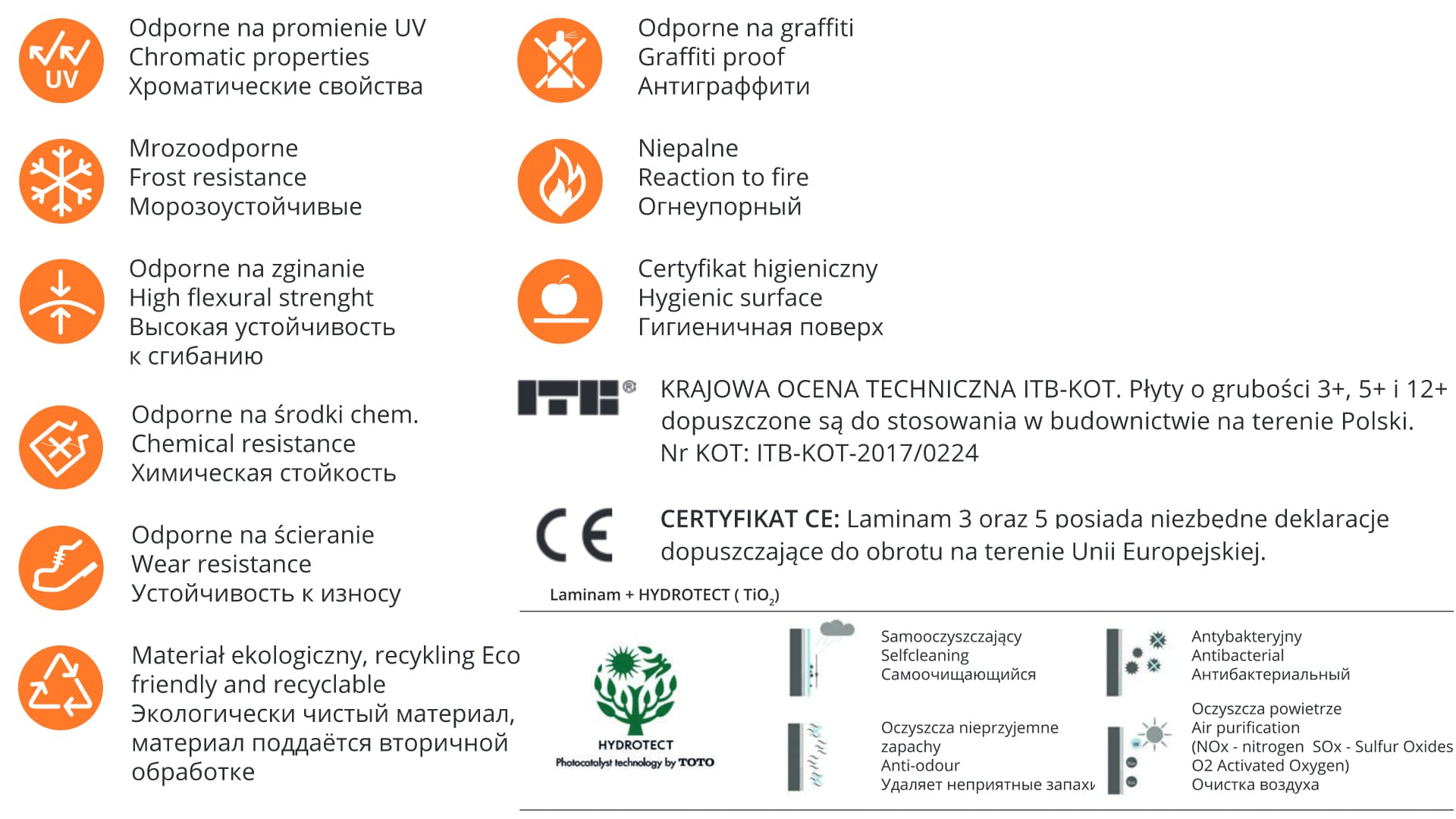sintered quartz (plate)
| The revolutionary disc format measuring 3000x1000x3. Plate of large dimensions, but a thickness only 3 mm! No worries, This material is much more durable than its competitors. The whole disc can be successfully used as a facade system, floors, cladding, decorative elements, inside and outside buildings. |  |
Mohs hardness
Mohs hardness scale - ten-point scale of mineral hardness characterized by scratch-resistant materials, the harder the material softer states, the hardness of the sintered silica is between 6-7 Mohs.
Slip
In accordance with DIN 51130 study was conducted slip resistance, which confirms its fulfillment through the quartz sinter. Individual lots of sintered quartz allocated to one of six groups of classifying ability to counteract slipping relative to the average angle of inclination of the floor.
 impregnability
impregnability
Permeability sinter quartz oscillates around 0,1 % with respect to the standard ISO absorption 10545-3.
Means, that the plates of this group are used for lining walls and floors inside and outside of buildings. Moreover, they can be used for both negative and positive which temperatures.
These characteristics sinter quartz can be used for lining the terraces, floors in the halls of trade and as a facade tiles.
In the case of the lining area to be taken, or for their resistance to abrasion.
Achieved degree of absorption 0,1 % It provides a strong frost resistance, which in comparison with the glazed tile and Italian, or Spanish eliminates the risk of damage from impact of weather conditions.
Stain resistance
The process of testing the stain resistance is to leave at least 5 test samples (cleaned and dried) a coloring agent for a minimum 24 hours.
Removing coloring agents takes place in subsequent stages using different cleaning agents and cleaning.
According to the standard UNI EN ISO 10545-14 sintered quartz classified as Class 5.
Removing stains from materials assigned to Class 5 It requires the use of only hot water.
Abrasion Resistance
Resistance sintered quartz lamina belonging to the unglazed tiles, tested according to ISO 10545-6, which determines the so-called. abrasion submerged.
It is a volume threadbare, during the test, on the wafer surface material (w mm3). The maximum value, permissible norm is 205 mm3. The value is lower, the higher the abrasion resistance of the material.
In the case of plates sintered quartz lamina, where the color is uniform throughout the thickness, abrasiveness is less important, as even some wiping the surface does not cause visual changes their pattern.
volume threadbare, during the test, the surface of the plate material in the sintered silica is less than 175 mm3 (Sketch Moro =145 mm3, Sketch Ivory = 125 mm3, Oxide=156 mm3 ).
The achieved results confirm the possibility of the use of tiles, sintered quartz lamina in the highest-traffic pedestrian, in places where they get the abrasive particles, like for example, sand, such as the entrance to public buildings, stations, offices, etc..

Application:
– flooring, ceiling, walls inside and outside of buildings,
– kitchen countertops and bathroom,
– Internal and external stairs, suspended stairs,
– door skins, furniture, table,
– decorative elements,
– elevations (can be mounted on facades, glued to a height of 8m).



